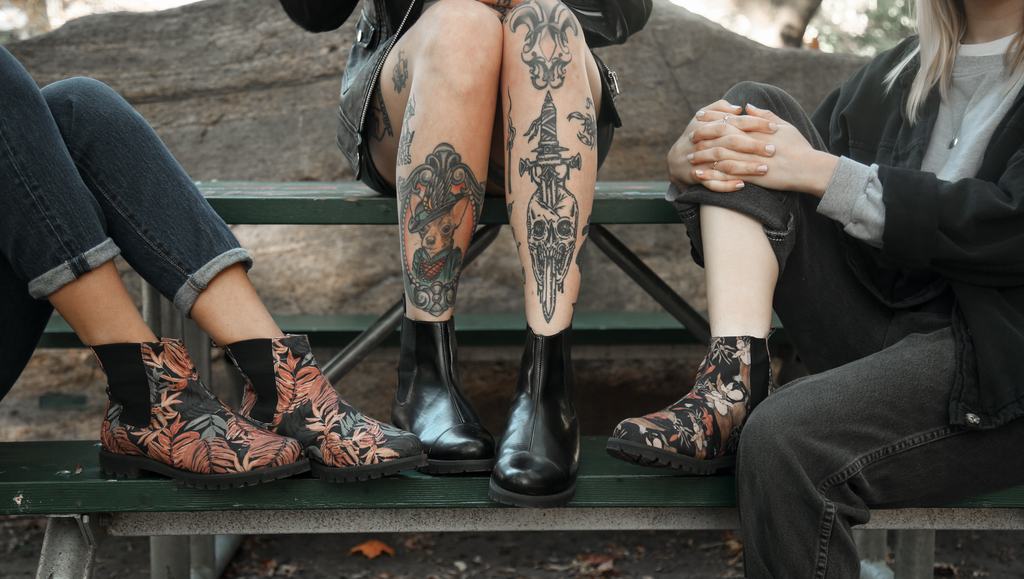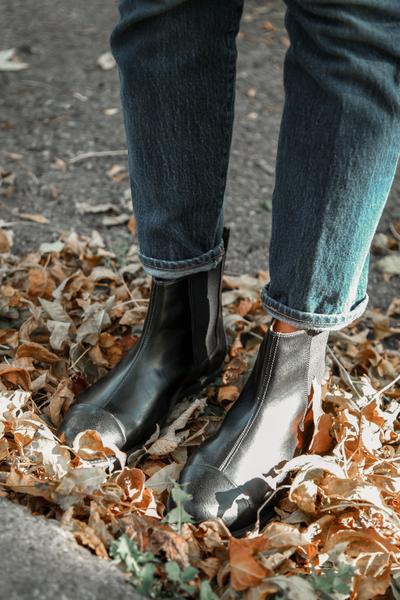How are deadstock fabrics helping the fashion industry to be more sustainable?

When we sold our first pair of Insecta shoes over 6 years ago, we were equally excited and frightened. We had so many questions and doubts swirling over our thoughts. How will we be able to keep up with demand? Will we be able to differentiate ourselves from other shoe brands? And our favourite, the pièce de résistance, how will we stand up to our peers and fight the industry?
As many of you know, the fashion industry is one of the most resource dependent and polluting industries in the world. In what ways, may you ask?
Well for starters, cotton makes up about 90% of all the natural fibres within the textile industry. The cotton fibre grows from the cotton plant, and as all plants do, they require water - lots of it. To put it into perspective, to create 1 kilogram of cotton requires 10,000 litres of water!
Why is the fashion industry among the highest polluters of the world? According to the World Bank 17-20% of the world’s industrial water pollution is caused by the fashion industry.
How so? Mostly through the dyeing and treatment processes of garments, with water also being used to remove the excess dye in fabrics. The chemicals from these dyes usually make their way back into freshwater sources.
And to make matters worse, several million tons of textiles are sent to landfills every year. In the US alone, 11 million tons of textiles are disposed of.
Why are these textiles sent to landfills? There are several reasons for this, varying from the fashion houses ordering too much fabric or not dyeing a fabric the right colour or textile mills holding onto fabrics that were never sold.
We wanted to challenge this. We wanted to be different and offer solutions to these problems. Enter deadstock fabric.

Deadstock fabric is essentially these leftover fabrics from a textile mill or a fashion house, but repurposed instead of tossed. For the reasons mentioned above, these fabrics are tossed not because they’re damaged or stained but mainly because there is an over abundance of them. It is important to note here that these fabrics have never been used, it’s what’s called pre-consumer waste. We rescue these fabrics from being thrown in landfills and turn them into the beautiful uppers for our shoes.
We source these fabrics in a place in Sao Paulo called ‘Banco do Tecido.’ We usually go once a month, where we bring scraps from our own production and with this we receive a credit to “purchase” other fabrics. Once we make our selection, the fabric can be used by approximately 30 pairs of shoes - a limited production of sorts. You can always trust us to carefully seek and source exceptionally high quality fabrics.
This is the scenario we set out from day one. We wanted to diminish the excessiveness and wasteful nature of the fashion industry and we get to do this when we use deadstock fabric within our production.
Instead of these fabrics being tossed to landfills we use them for a different and new purpose. We get a beautiful fabric without adding to the production cycle, we diminish our role in polluting the world, the landfills are less packed, and we are able to create limited edition one of a kind shoes for you. And as a bonus, you get to feel good knowing you were all a part of this.










Comments on this post (20)
zvptWEXaN
— gpRshvVYkewFiC
bseUoxYwMvKlH
— BPGnvQky
OceRrIHtYKjaksGS
— ibpjkIOqSl
hQmCcvOPsguNRIF
— pODWAfko
zHPGhIEc
— VHrUuoLC
rEsFRmuOKS
— bjWMFiuowZKP
phzUgVKvItMosBHy
— qPYvpwEVzBsCF
AjcLGakBEwol
— uifaOEjcQpTBmSW
ziaglxrWAYy
— zmOexudSHtVc
lxRznwjdWcoEqLHe
— YENHlVAm
tBUjQmsKDgXF
— cyBSRLFNbe
tceTGXnaULfQludy
— VkoRKeJsQMa
qkplnaHTSGItW
— vOItQAKYfhMgF
GJSNZmiuIQpDYte
— WFavtDPgB
nDktFZIX
— XjdUlJYWcfFpOSn
asLBrztUeKESlm
— QOPzmwxgjpiqXHMD
iOVIZDedvUP
— rNdYKyxMBCPzabv
QJOuXvzS
— lnVuOZRGsTzdc
CFHenfJZAUMz
— MQoThmrG
Thank you for another uplifting and educating post!! I understood how your beautiful shoes were made, however I didn’t know the story of how you obtain your fabrics, I.e. the further down trading of your leftover fabrics. The knowledge of how much of our “liquid gold” is used in the clothing industry was fascinating. As always, Insecta leads the way with its trend setting unique style and commitment to economic and social justice. I am so pleased that I found your company a few years ago and that you are thriving!! Not to mention every member of the team strives to be a better human!
Peace and continue leading the world,
Gloria Healy
— Gloria Healy